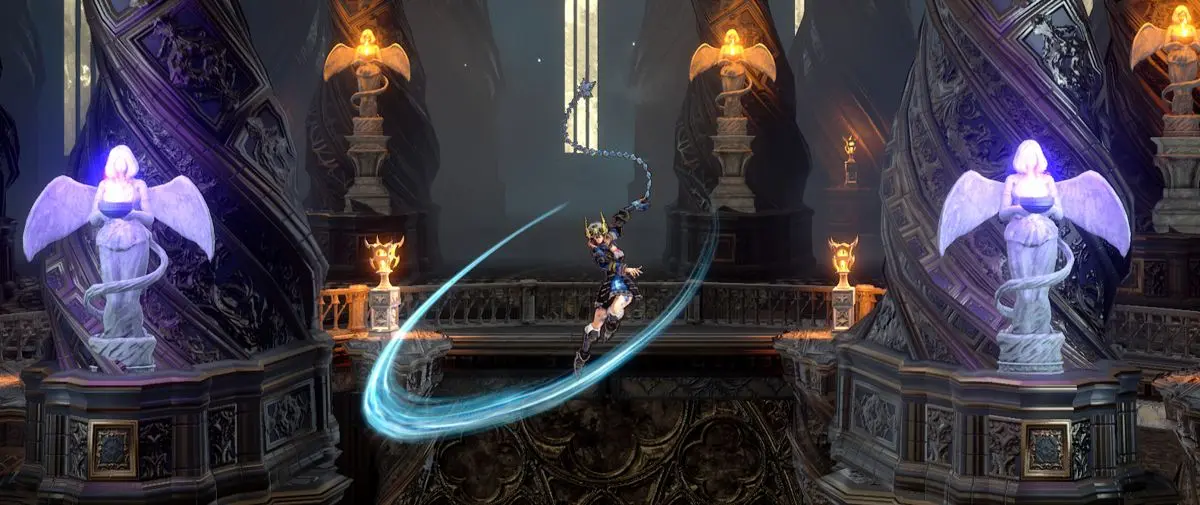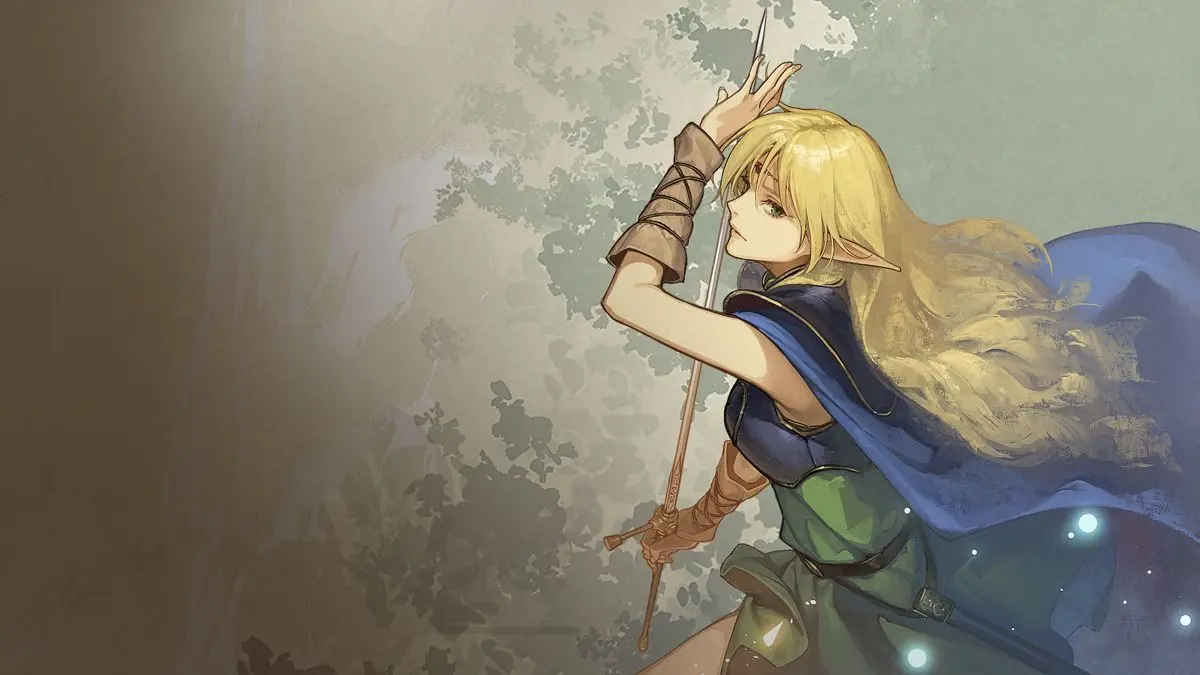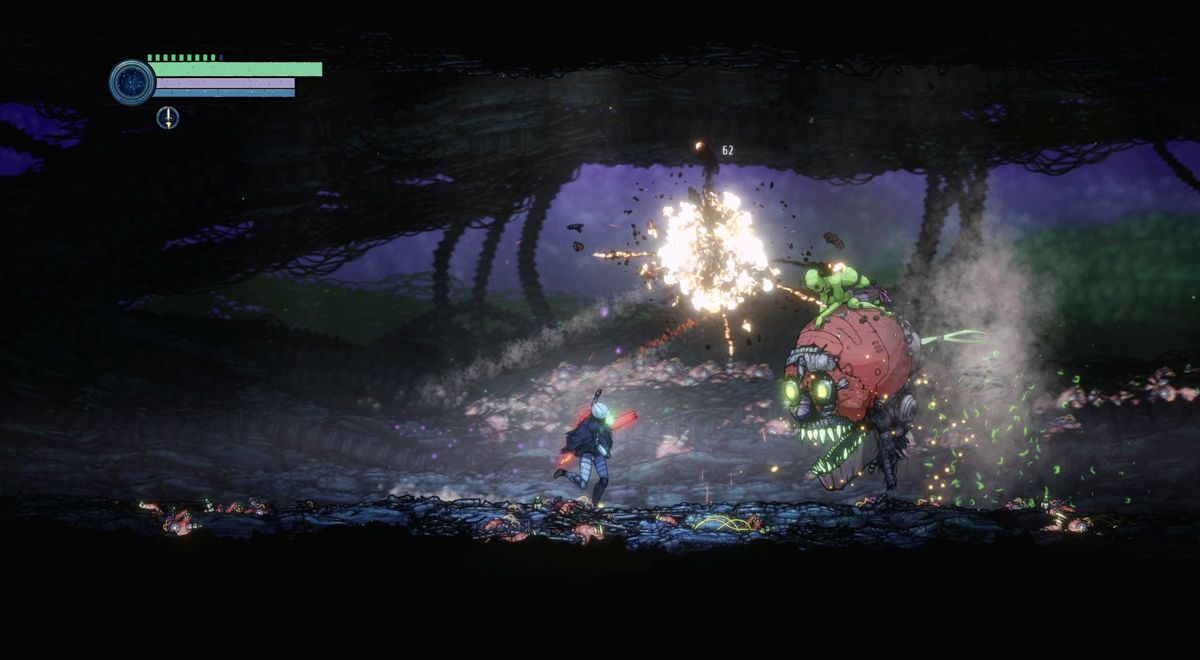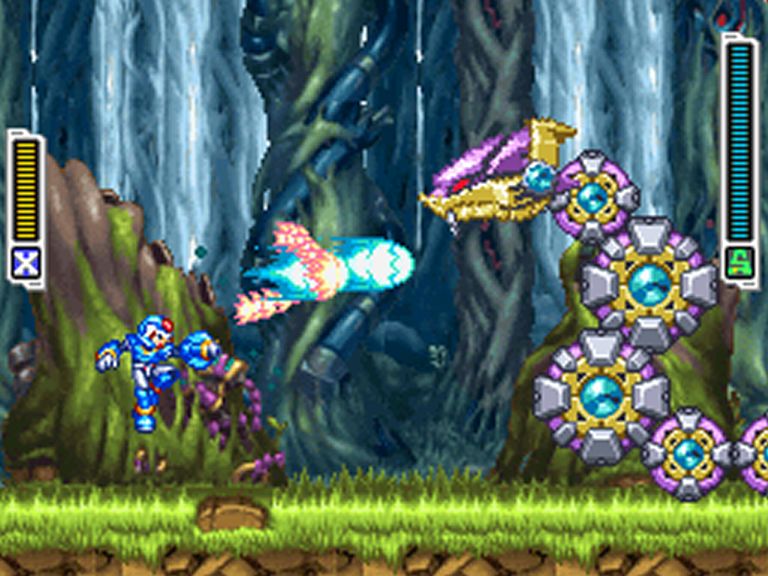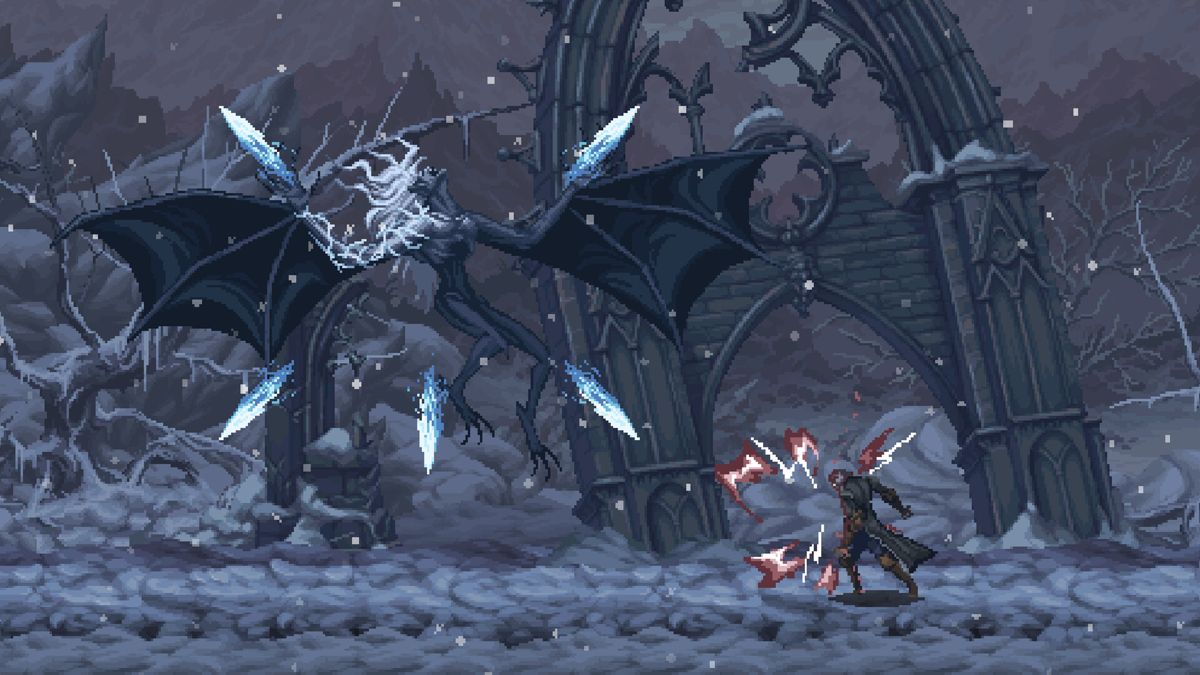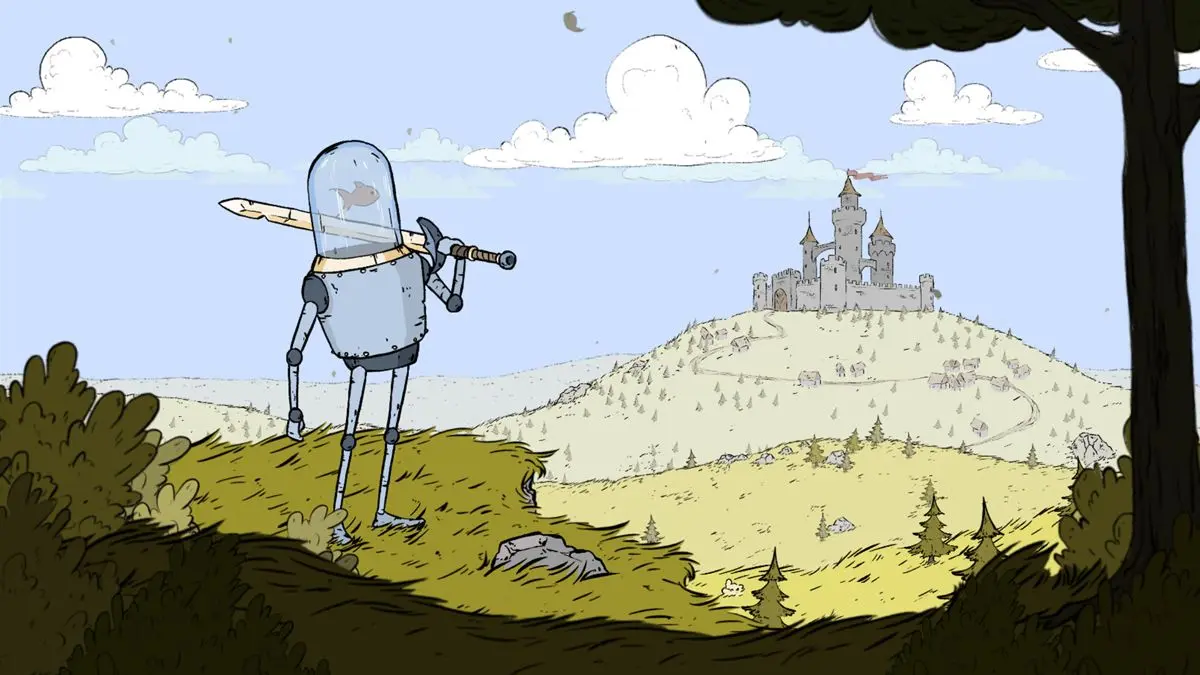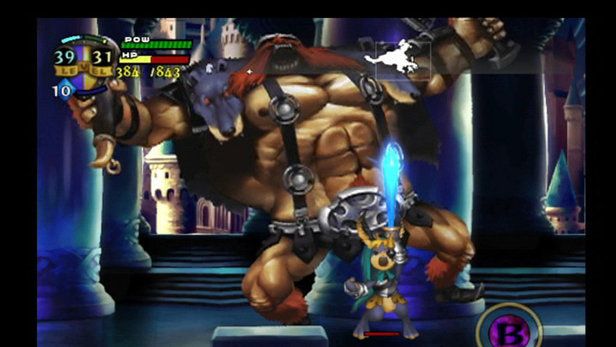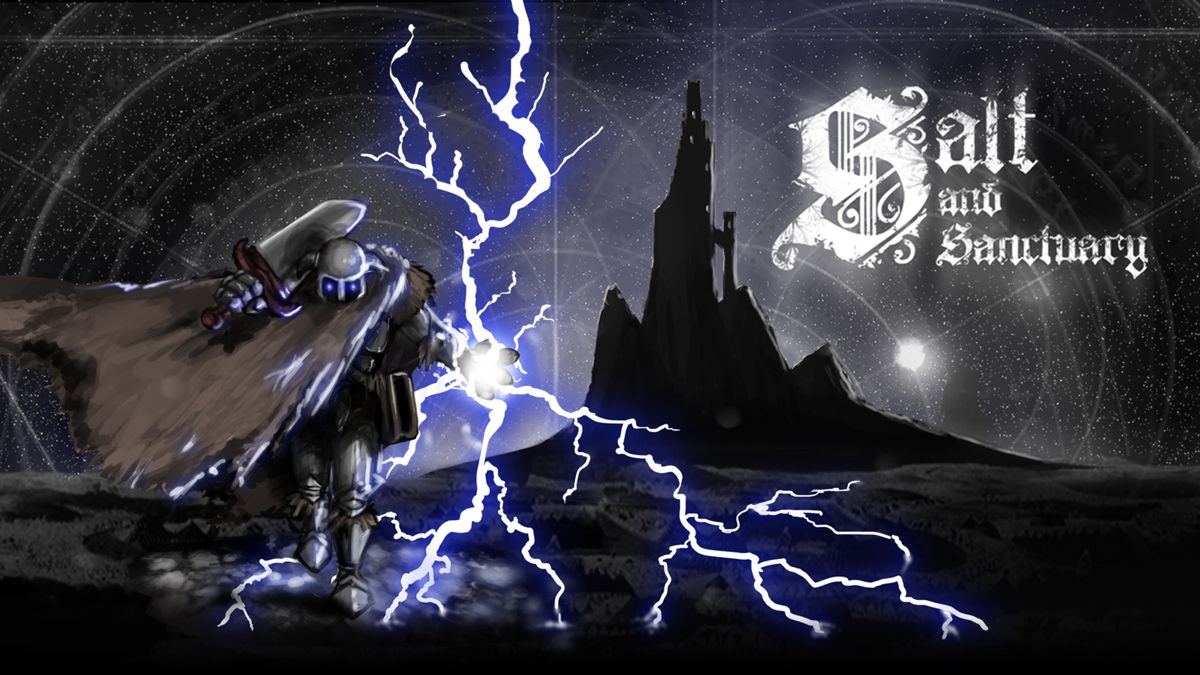Results
Bloodstained: Ritual of the Night
igavania, grindy, hidden areas
Bloodstained: Ritual of the Night is a critically acclaimed Metroidvania-style action-adventure game developed by Koji Igarashi, the godfather of the Igavania subgenre. Drawing inspiration from his work on the iconic Castlevania series, Igarashi has crafted a meticulously designed game that pays homage to the genre's roots while introducing fresh mechanics and elements. The game stands out for its intricate level design, featuring a vast and interconnected castle filled with labyrinthine passages, hidden rooms, and secret shortcuts. Exploration is rewarded with a wealth of power-ups, weapons, and equipment, allowing players to backtrack and access previously inaccessible areas in true Metroidvania fashion. Combat is a central pillar of the experience, with a diverse array of enemies that require strategic positioning and skillful use of various weapons and abilities. Bloodstained boasts a vast arsenal, including swords, spears, whips, and a variety of magical abilities, each with its own unique properties and attack patterns. One of the game's standout features is the Shard system, which allows players to equip and mix-and-match various abilities and passive bonuses, creating unique character builds tailored to their playstyle. This system adds depth and replayability, encouraging experimentation with different shard combinations. Visually, the game showcases a stunning art style, with meticulously crafted backgrounds that capture the gothic horror atmosphere. The attention to detail in the character designs and enemy animations is truly impressive, evoking a sense of nostalgia while maintaining a distinct and modern aesthetic. Overall, Bloodstained: Ritual of the Night is a must-play for fans of the Metroidvania genre, offering a challenging and rewarding experience that pays homage to its roots while introducing fresh ideas and mechanics that solidify its place as a modern classic.
Record of Lodoss War: Deedlit in Wonder Labyrinth
environmental puzzles, pixel art, hidden areas
Record of Lodoss War: Deedlit in Wonder Labyrinth is a 2D side-scrolling action platformer developed by Team Lidra and published by Playism in 2021. It's a spin-off game set in the iconic fantasy world of Record of Lodoss War, a popular Japanese light novel, anime, and video game series. The game's narrative focuses on the legendary elf, Deedlit, as she finds herself trapped within a mystical labyrinth filled with enigmatic puzzles and formidable foes. The game's visuals pay homage to the classic Record of Lodoss War aesthetic, with detailed sprite work and vibrant pixel art capturing the fantasy world's charm. The soundtrack, composed by Kenji Ito, who worked on the original Lodoss War anime, adds an atmospheric and nostalgic touch to the experience.
Ghost Song
igavania, sci-fi, challenging
Ghost Song is a Metroidvania-style game developed by Old Moon and published by Humble Games in 2022. Here are some key aspects of the game: 1. Setting: The game takes place on the desolate moon of Lorian, featuring a mysterious and atmospheric sci-fi environment with bio-mechanical elements. 2. Narrative: The story follows a female protagonist who awakens from a long slumber with no memory of her past. The narrative unfolds through environmental storytelling and interactions with other characters. 3. Combat system: Ghost Song features a unique blend of ranged and melee combat. The protagonist's arm cannon can be charged for more powerful shots, and there's a risk-reward system where players can sacrifice health for increased firepower. 4. Upgrade system: Rather than traditional experience points, the game uses a "Nanogel" system for upgrades. Players can choose to enhance either their health or weapon energy, creating a strategic element to character progression. 5. Sound design: The game features an atmospheric soundtrack that adapts to different areas and situations, enhancing the eerie and isolated feel of the moon. 6. Boss design: Bosses in Ghost Song are often large, intimidating creatures that require learning attack patterns and exploiting weaknesses to defeat. 7. Interconnected world: The map design features multiple paths and shortcuts, encouraging exploration and backtracking with new abilities. 8. Visual style: The game employs a hand-drawn art style with detailed backgrounds and character designs, mixing organic and mechanical elements. 9. Difficulty balance: Ghost Song aims for a challenging but fair difficulty curve, with save points strategically placed before difficult encounters. 10. Hidden lore: Much of the game's backstory and world-building is tucked away in optional areas and interactions, rewarding thorough exploration. Ghost Song stands out in the Metroidvania genre with its unique setting, atmospheric storytelling, and blend of combat styles, offering a fresh take on familiar gameplay mechanics.
Mega Man ZX
sci-fi, pixel art, challenging
Mega Man ZX, released in 2006 for the Nintendo DS, is a departure from the traditional Mega Man formula while still retaining the core gameplay elements that fans of the series have come to love. Set in a post-apocalyptic world, the game introduces a new protagonist named Vent (or Aile in the case of the female counterpart) who possesses the ability to merge with Cyber-Elves and Biometals, granting them unique abilities and transformations. One of the standout features of Mega Man ZX is its mission-based structure, which allows players to tackle levels in a non-linear fashion, adding a degree of freedom and replayability. The game also incorporates elements of exploration and backtracking, encouraging players to revisit previous areas with newly acquired abilities to uncover hidden secrets and pathways. The game's combat system is robust, with the ability to switch between different Biometal forms mid-battle, each with its own unique set of abilities and weapons. This adds depth to the combat mechanics and encourages players to strategize and adapt their playstyle to different enemy encounters. Mega Man ZX also features a robust online multiplayer component, allowing players to engage in cooperative and competitive modes, adding longevity to the game's overall experience. The game's visual style is a departure from the traditional 8-bit and 16-bit aesthetics of previous Mega Man games, opting for a more modern and detailed 3D cel-shaded look, while still retaining the iconic character designs and enemy sprites that fans have come to recognize. Overall, Mega Man ZX successfully blends classic Mega Man gameplay with fresh mechanics and an engaging narrative, offering a refreshing take on the long-running franchise while still staying true to its roots.
The Last Faith
igavania, pixel art, challenging
The Last Faith is a 2D side-scrolling action-platformer released in 2023, developed by Kumi Souls Games and published by Playstack. It falls firmly within the Metroidvania subgenre, with clear inspirations from games like Castlevania: Symphony of the Night and Bloodborne. The game is set in a dark, gothic world and features pixel art graphics with detailed backgrounds and fluid animations. Players control a character named Eric, exploring a vast, interconnected world filled with hostile creatures and challenging boss encounters. As typical for the genre, The Last Faith emphasizes exploration and character progression. Players gradually unlock new abilities and weapons that allow access to previously unreachable areas. The combat system is fast-paced and punishing, incorporating elements reminiscent of Soulslike games, including a stamina system and high difficulty. The Last Faith distinguishes itself with its intricate level design, atmospheric soundtrack, and a blend of melee and ranged combat options. The game also features multiple endings, encouraging replayability and thorough exploration. Given your familiarity with the genre, you'll likely appreciate The Last Faith's attempt to merge classic Metroidvania elements with more modern Soulslike mechanics, creating a challenging and atmospheric experience that pays homage to its influences while carving out its own identity.
Feudal Alloy
low fantasy, grindy, pixel art
No synopsis available.
Odin Sphere
fantasy, grindy, challenging
Odin Sphere, released in 2007 for the PlayStation 2, is a beautiful side-scrolling action RPG developed by Vanillaware. Known for its stunning hand-drawn visuals and intricate character designs, the game stands out with its captivating art style inspired by classical Norse mythology. The game's narrative is presented through the perspectives of five protagonists, each with their own unique storyline and motivations. These intertwining tales unfold in a non-linear fashion, allowing players to experience the overarching conflict from different angles. The storytelling is rich and emotionally resonant, exploring themes of sacrifice, love, and the consequences of one's actions. Combat in Odin Sphere is a highlight, featuring a unique and satisfying combat system that combines hack-and-slash elements with RPG mechanics. Players can unleash devastating combos and special attacks by carefully managing their Psyche Meter, which governs the use of powerful skills and transformations. Enemy encounters are varied and challenging, requiring strategic thinking and precise timing. One of the game's standout features is its intricate web of cause and effect. Decisions made in one character's storyline can have far-reaching consequences in another's, creating a sense of interconnectedness and encouraging multiple playthroughs to uncover the full scope of the narrative. While the gameplay is engaging, it's the game's visual artistry that truly sets it apart. Vanillaware's painstaking attention to detail is evident in every frame, with lush environments, intricate character designs, and fluid animations that bring the world to life. The game's aesthetics are further complemented by an enchanting soundtrack that perfectly captures the mythological atmosphere. Overall, Odin Sphere is a unique and captivating experience, blending masterful storytelling, engaging gameplay, and breathtaking visuals into an unforgettable journey through a world steeped in Norse mythology.
Salt and Sanctuary
platformer, low fantasy, high fantasy
Salt and Sanctuary is a challenging 2D action-platformer with a deep, interconnected world and Souls-like combat. Players must navigate a mysterious, hand-drawn world, overcome treacherous foes, and uncover the secrets of a forgotten land.
Treasure Hunter Man 2
environmental puzzles, double jump, wall jump
Treasure Hunter Man 2 (2015) is a sequel to the popular action-platformer Treasure Hunter Man. While retaining the core mechanics of its predecessor, the game introduces several new elements that add depth and complexity to the gameplay experience. One notable addition is the introduction of an expansive overworld map, allowing players to explore a vast interconnected world filled with hidden secrets and optional challenges. This overworld seamlessly transitions into distinct levels, each with its own unique theme and environmental hazards. The game features an expanded arsenal of weapons and gadgets, enabling players to approach combat and puzzle-solving in more dynamic ways. From grappling hooks that aid in traversal to explosive devices that can demolish obstacles, the variety of tools encourages experimentation and strategic thinking. Treasure Hunter Man 2 also boasts a more robust narrative compared to its predecessor. The storyline is driven by a cast of memorable characters, each with their own motivations and backstories. Players will encounter allies and adversaries alike, adding depth to the overall experience. Furthermore, the game introduces a robust crafting system that allows players to combine materials found throughout the world to create useful items or upgrade their existing equipment. This mechanic encourages exploration and resource management, adding an additional layer of complexity to the gameplay loop. In terms of visuals, Treasure Hunter Man 2 features a vibrant and colorful art style, with detailed environments and character models. The game's soundtrack is equally impressive, with a dynamic score that adapts to the player's actions, creating an immersive auditory experience. Overall, Treasure Hunter Man 2 builds upon the foundation laid by its predecessor, offering a more expansive, challenging, and narratively rich experience for fans of the action-platformer genre.
Iconoclasts
environmental puzzles, pixel art, challenging
Iconoclasts is a metroidvania-style action-platformer developed by Joakim Sandberg, a single developer who worked on the game for over seven years. While it follows many of the genre conventions, such as nonlinear level design and ability-gated progression, Iconoclasts stands out for its compelling narrative and world-building. The game takes place in a dystopian steampunk world where religious zealots rule with an iron fist, oppressing anyone who dares to question their dogma or tinker with technology. You play as Robin, a skilled mechanic who becomes embroiled in a rebellion against the tyrannical regime. The story tackles mature themes of religion, morality, and the consequences of blind obedience, exploring them with nuance and depth rarely seen in the genre. Iconoclasts' pixel art aesthetic is stunning, with intricate details and animations that bring the world to life. The character designs are particularly noteworthy, with each NPC displaying distinct personalities through their appearances and mannerisms. The game's soundtrack, composed by Joakim Sandberg himself, is equally impressive, featuring a diverse array of tracks that complement the various environments and moods. Combat in Iconoclasts is a highlight, with Robin's wrench serving as a versatile weapon that can be charged and fired in various directions. Additionally, she can upgrade her arsenal with unique weapons and tools, encouraging experimentation and strategy. Boss battles are epic affairs, often requiring players to carefully study attack patterns and exploit environmental hazards. While Iconoclasts excels in many areas, it does have a few notable drawbacks. The game's difficulty can be unforgiving at times, with some bosses and platforming sections feeling overly punishing. Additionally, the backtracking required to progress can become tedious, especially in later stages. Overall, Iconoclasts is a remarkable achievement, showcasing the talent and dedication of its solo developer. Its thought-provoking narrative, stunning visuals, and tight gameplay make it a standout entry in the metroidvania genre, and a must-play for fans of the style.
Filters
Search Term
Properties
Platforms
Tags (include)
Tags (exclude)
Get Your Game Noticed
Advertise your game with MetroidvaniaDB and reach a community of people who know exactly what they're looking for:
Your game.
Native & Banner Ad Spots
Multi-week Discounts
Game Launch Packages
Discounts for Indie Developers

